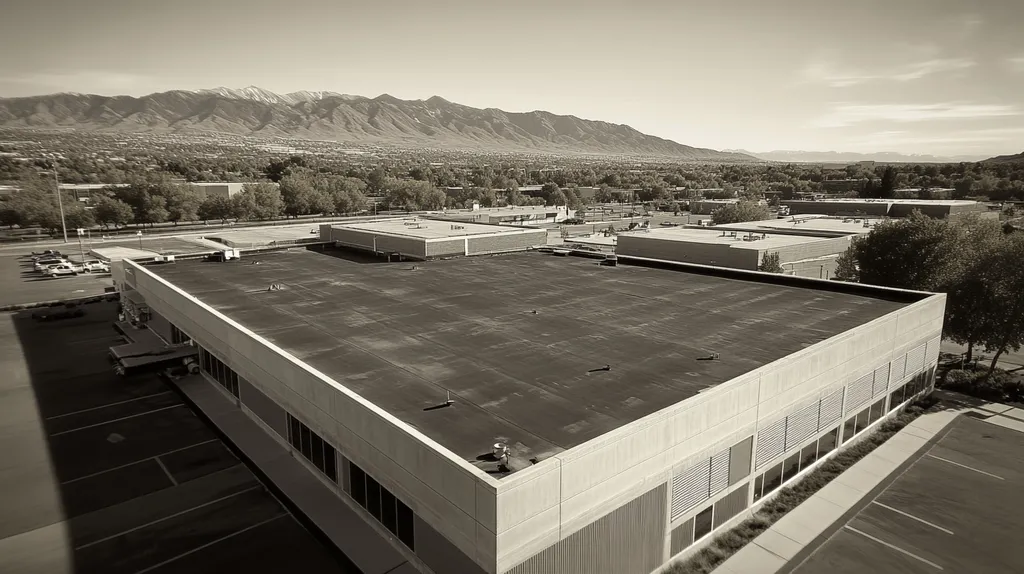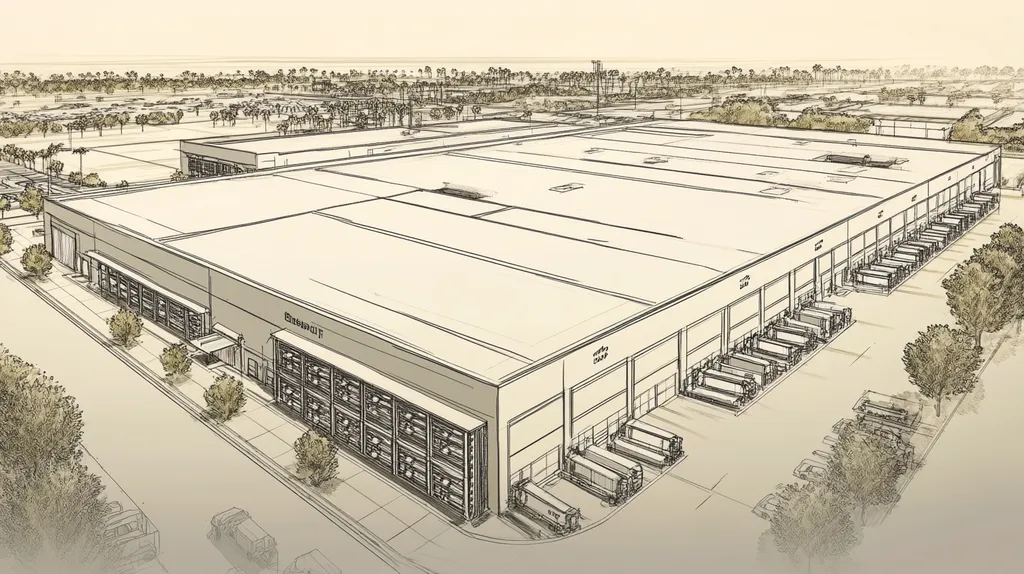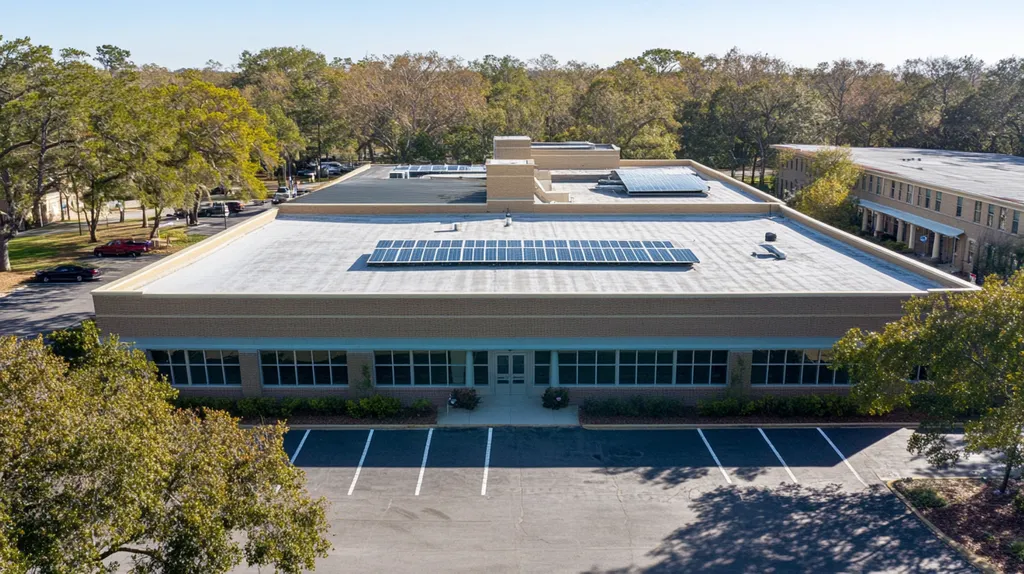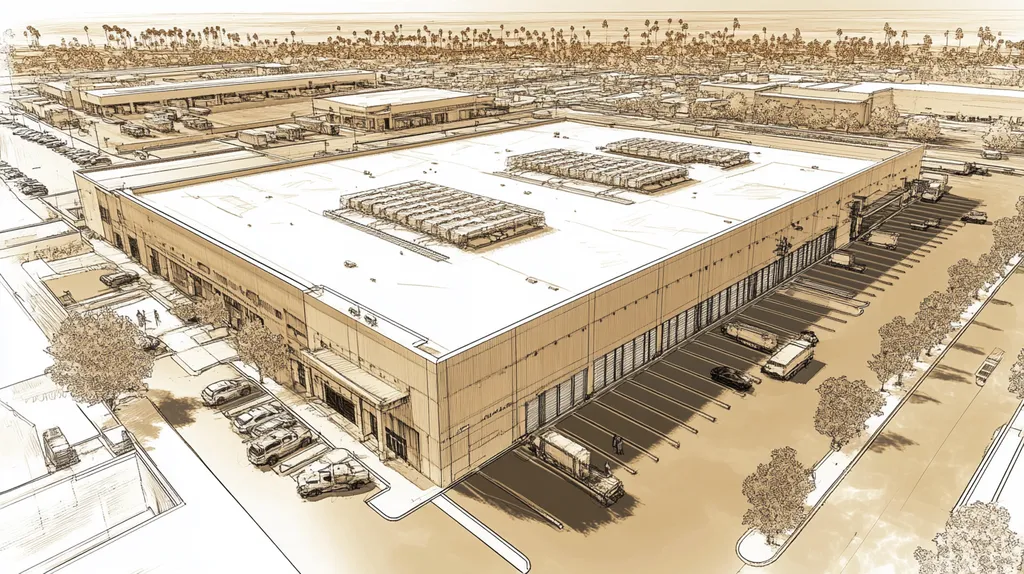Commercial roof repairs fail at an alarming rate, with industry data showing that 90% of premature roof failures stem from preventable mistakes during maintenance and repairs. These failures cost U.S. businesses over $2.5 billion annually in damage repairs, lost productivity, and disrupted operations.
For facility managers and property owners, understanding these common pitfalls is crucial for protecting their substantial roofing investments. From performance factors like standing water to compliance requirements and risk management, each mistake presents unique challenges requiring specific solutions.
This comprehensive guide provides actionable checklists to help facility managers identify, prevent, and address the most frequent roofing repair errors that threaten commercial properties.
SECTION 1: PERFORMANCE FACTORS
Overlooking vital performance factors in commercial roof repairs can lead to costly consequences. It is estimated that around 25% of roof failures stem from inadequate maintenance and repair practices. By addressing critical issues like standing water, flashing, and membrane integrity, facility managers not only protect their assets but also extend the overall lifespan of their roofing systems. This section uncovers common mistakes and provides actionable solutions for enhancing roof performance.
Ignoring Standing Water Issues
Standing water on a roof poses a serious threat, yet it tends to be an overlooked problem. Water accumulation creates a favorable environment for mold growth and accelerates the degradation of roofing materials. Furthermore, the excessive weight can compromise the building’s structural integrity.
Facility managers should prioritize the installation of reliable drainage systems to mitigate these risks. Conducting regular inspections is crucial for identifying and resolving standing water issues before they escalate. Investing in preventive measures can save thousands in repairs and significantly extend the longevity of the roof.
In addition, a well-functioning drainage system facilitates effective water runoff, minimizing the chance of leaks and other secondary damage. It is essential to educate staff on the importance of evaluating drainage performance during routine roof assessments.
Key Action Items
Failing to Check Flashing and Seams
Flashing and seams are essential elements in preventing water intrusion, yet they are often neglected during roofing repairs. Deteriorating flashing can lead to leaks, jeopardizing both the building’s structure and interior spaces. Similarly, improperly sealed seams can allow moisture to seep in.
Regular inspections of flashing and seams are vital for detecting problems early. Facility managers should be vigilant for cracks, gaps, or any loose materials during routine checks. Addressing these issues without delay can save considerable time and expenses down the road.
Performing routine maintenance and using high-quality materials for flashing repairs is crucial. Additionally, ensuring that installation practices align with manufacturer guidelines can bolster the roof’s defense against the elements.
Key Action Items
Neglecting Roof Membrane Shrinkage
Roof membrane shrinkage is another critical factor that is often overlooked. As roofing materials age, they may begin to contract, putting stress on seams and flashing. This can create openings for leaks that might be hard to detect but can lead to significant damage if not addressed.
Facility managers should routinely inspect the condition of the roof membrane, especially on older roofs or those frequently exposed to harsh weather conditions. Looking out for signs of shrinkage, such as cracks or tension at the seams, is essential for timely fixes. Early detection can thwart water infiltration and the resulting structural harm.
Selecting the appropriate membrane material for the local climate is also vital for optimal performance. Consulting roofing professionals can help ensure proper installation and ongoing maintenance to combat shrinkage problems effectively.
Key Action Items
SECTION 2: FINANCIAL CONSIDERATIONS
Facility managers often navigate financial pressures that can lead to costly roofing decisions. Choosing low-quality materials for repairs may seem economical now, but it can result in significantly higher expenses later. Additionally, delaying necessary repairs can amplify problems, increasing both risks and overall costs. Understanding these financial considerations is essential for maintaining a robust roofing system and protecting your property investment.
Using Low-Quality Roofing Materials
Selecting inexpensive roofing materials is a common misstep with lasting financial consequences. While upfront savings may be attractive, inferior materials often lack the resilience required for commercial roofs. This vulnerability can result in early failures and more frequent repairs, driving up long-term costs.
For example, budget roofing membranes may deteriorate swiftly under environmental conditions, necessitating earlier replacements. Such repeated repairs not only inflate costs but may also lead to structural damage if leaks occur. Investing in high-quality materials can mitigate these risks and ultimately save money.
Reliable roofing products often come with warranties, offering added financial protection and peace of mind. Therefore, facility managers should evaluate total lifecycle costs rather than just initial expenses. Choosing premium materials might seem daunting at first, but it offers substantial savings by enhancing longevity and reducing repair needs.
Key Action Items
Delaying Minor Repairs and Maintenance
Timing is a crucial factor when it comes to roof repairs. Facility managers often hesitate to address minor repairs, believing they can save on costs temporarily. However, neglecting these small issues can lead to larger, more expensive problems down the line.
For instance, a minor leak might only cost a few hundred dollars to repair initially. Yet if ignored, it could escalate, causing extensive water damage and resulting in thousands in repair costs. Leaving minor issues unaddressed can transform manageable repairs into major disruptions, pushing the expenses far beyond what was initially anticipated.
Implementing regular maintenance and prompt repairs is vital for safeguarding a roof’s integrity. Establishing a proactive maintenance schedule can greatly minimize long-term expenses while enhancing the roof’s lifespan. Quicker responses to repairs help preserve both capital and the overall value of the building.
Key Action Items
Inadequate Budgeting for Roof Inspections
A significant oversight among facility managers is underfunding budget allocations for routine roof inspections. Skipping these vital evaluations can lead to costly long-term damage that may go unnoticed until it’s too late.
Annual inspections enable professionals to pinpoint vulnerabilities before they intensify, saving thousands in costly repairs later. Without sufficient funding, these essential assessments might be overlooked, creating a higher risk of substantial repair costs as damage worsens.
Moreover, regular inspections can inform better capital planning. Identifying issues early helps in forecasting repair budgets accurately, minimizing unexpected expenses. Therefore, allocating a proper budget for regular roof inspections should be viewed as a necessity, not an option, to maintain the facility’s structural integrity and financial health.
Key Action Items
SECTION 3: COMPLIANCE REQUIREMENTS
Compliance with installation techniques, warranties, and local building codes is crucial for the success of commercial roof repairs. Neglecting these requirements can lead to financial setbacks and potential safety issues. Research shows that non-compliant installations can reduce a roof’s lifespan by as much as 30%. By prioritizing compliance, facility managers can safeguard their investments and ensure the enduring performance of their roofing systems.
Ensuring Proper Installation Techniques
Proper installation techniques are the foundation of compliance. Utilizing unauthorized materials or subpar methods can jeopardize roof integrity and lead to significant issues. Roofs installed without adhering to manufacturer guidelines are often prone to leaks and premature failures.
It is vital to engage skilled roofing professionals who understand various roofing systems. Inadequate training or oversight can result in improper techniques that threaten both safety and structure.
Additionally, conducting regular inspections throughout the installation process helps catch any compliance lapses early. This proactive strategy ensures that all aspects of the installation conform to industry standards and best practices.
Key Action Items
Understanding Warranties and Guarantees
A solid grasp of warranties and guarantees is essential for tackling commercial roof repairs. These documents outline the responsibilities of both the contractor and the property owner. Overlooking warranty terms can expose facility managers to unforeseen expenses.
A frequent misconception is assuming all warranties are created equal. Some may only cover material defects, while others include workmanship. Clarifying these terms before engaging in repairs ensures awareness of liabilities and protections.
It is also important to review maintenance requirements to keep warranties valid. Ignoring routine upkeep can void protections, putting properties at greater risk. By carefully examining warranties, facility managers can enhance the roof’s lifespan and protect their financial investments.
Key Action Items
Adhering to Local Building Codes
Compliance with local building codes is not just a recommendation but a necessity in commercial roofing. Building codes are established to ensure safety and resilience, protecting both occupants and property. Ignoring these codes risks penalties, including fines or forced removal of non-compliant structures.
For instance, certain regions mandate specific materials or architectural features to withstand local climate challenges, such as heavy snow or high winds. Non-compliance can threaten not just the roof but the entire facility.
Facility managers must carefully research local building codes before any repair work begins. Collaborating with local authorities or experienced roofing contractors can help clarify these important regulations. Compliance ultimately ensures safety, reduces legal risks, and promotes effective roof performance.
Key Action Items
SECTION 4: RISK MANAGEMENT
Effective risk management is essential for preserving the integrity of commercial roofs. Over 60% of roofing failures result from unnoticed punctures and damage, leading to costly repairs and safety hazards. Addressing foot traffic and preventing DIY repair mistakes are vital steps in safeguarding both the roof and those who access it. This section explores these critical areas and offers practical strategies to mitigate risks.
Identifying and Addressing Punctures and Damage
Punctures and damage can severely shorten a roof’s lifespan if not identified promptly. Regular inspections are crucial, especially after severe weather events, where facility managers should be vigilant for warning signs like water stains, lifted membrane, or visible tears.
Utilizing advanced technologies such as infrared thermography can detect hidden moisture trapped within roofing materials. This method reveals temperature variations that might indicate underlying leaks. Engaging professional assessments is a smart investment, potentially saving property owners from much larger problems later on.
When damage is discovered, immediate repairs become paramount. Delays can result in more extensive damage and significantly increased repair costs. Maintaining open communication with roofing contractors ensures that identified issues are addressed properly and efficiently. Consistent record-keeping of inspections and repair activities supports responsible roof management over time.
Key Action Items
Managing Foot Traffic on the Roof
Foot traffic can significantly affect the structural integrity of a roof. Establishing designated pathways helps minimize damage caused by heavy footfall. Facility managers should consider investing in protective materials, such as walk pads, to shield vulnerable areas.
Clear communication about access policies is vital. Facility managers must inform personnel about approved routes and emphasize the importance of limiting roof access whenever possible. This proactive approach helps maintain the roof’s condition and extends its lifespan.
Routine inspections of heavily trafficked areas will identify signs of wear and tear early. Implementing a schedule for these inspections ensures that any emerging damage is addressed before it escalates and incurs unexpected repair costs. Training staff about safe foot traffic practices further reinforces the commitment to maintaining a well-functioning roof.
Key Action Items
Preventing DIY Repair Mistakes
DIY repairs can often do more harm than good on commercial roofs. Many facility managers underestimate the complexity of roofing systems and the risks associated with self-repairs. Engaging certified roofing professionals ensures work is completed to industry standards and best practices.
Even seemingly straightforward fixes can lead to unintended consequences if not performed correctly. For instance, improper sealing can result in water accumulation, causing damage down the line. Emphasizing the necessity of professional intervention can ultimately save time and money.
Promoting a culture of caution among staff is essential. Establishing clear guidelines regarding when to call a professional prevents the issues linked to amateur repairs. Educating staff about appropriate DIY tasks, while still advising against complex repairs, can empower them without jeopardizing the roof’s integrity.
Key Action Items
SECTION 5: OPERATIONAL PROCEDURES
Neglecting operational procedures can result in costly roof repairs and frustrating downtime for commercial facilities. Research indicates that maintaining a routine schedule for inspections can help prevent up to 90% of potential roofing issues. By focusing on organized operational practices, facility managers can save money, prolong the lifespan of their roofs, and ensure seamless business operations. This section outlines essential procedures that should be included in every facility’s maintenance strategy.
Scheduling Regular Roof Inspections
Regular roof inspections are crucial for identifying potential issues before they worsen. A proactive approach enables facility managers to detect early signs of wear and damage, including loose shingles, leaks, and damaged flashing. It is recommended to schedule inspections at least twice a year for optimal roof health.
Inspections should also occur after severe weather events like heavy storms or hail, as these conditions can cause hidden damages that require immediate attention. Without routine inspections, property owners may face extensive and expensive repairs when easily mitigated issues go unnoticed.
Thorough documentation of inspection findings is essential. This record-keeping helps track roof conditions over time and aids in making informed maintenance decisions. Collaborating with qualified roofing professionals ensures accurate and reliable assessments.
Key Action Items
Maintaining Proper Drainage Systems
Well-functioning drainage systems are vital for avoiding water accumulation and the significant roofing issues it can cause. Standing water can add excessive weight to flat roofs and promote mold growth, which deteriorates roofing materials. Facility managers must ensure drains, scuppers, and gutters are clear and well-maintained.
Regular checks of drainage systems should include identifying blockages from debris, leaves, and dirt, ensuring effective cleaning practices to prevent backups. Documentation of cleaning dates and conditions helps to maintain accountability and assist with future planning.
If drainage problems persist, facility managers may need to evaluate the roof’s architecture or consult experts for improvements. Enhancements, such as adding drains or adjusting slopes, can significantly boost drainage efficiency and protect the roof’s integrity.
Key Action Items
Inspecting and Replacing Insulation
Proper insulation is critical for maintaining energy efficiency and preventing moisture buildup. Poor insulation can lead to temperature fluctuations and increased energy costs, while trapped moisture can foster mold growth and structural issues. Conducting regular insulation checks should be an integral part of the roof maintenance strategy.
Facility managers should be alert to signs of insulation compromise, such as diminished energy efficiency and visible water stains on ceilings. Insulation should be examined during roof inspections or routine maintenance to ensure it meets the necessary performance standards.
When replacing insulation, selecting materials compatible with the existing roof system is vital for optimal performance. For facilities with high moisture concerns, moisture-resistant insulation options may be appropriate.
Key Action Items
SECTION 5: OPERATIONAL PROCEDURES
Ineffective operational procedures can lead to expensive roof repairs and frustrating downtime for commercial facilities. Research indicates that maintaining a routine schedule for inspections can help prevent up to 90% of potential roofing issues. By prioritizing systematic operational practices, facility managers can save money, extend the lifespan of their roofs, and ensure smooth business operations. This section outlines essential procedures that should be integrated into every facility’s maintenance plan.
Scheduling Regular Roof Inspections
Regular roof inspections are essential for identifying issues before they escalate. A proactive approach can uncover early signs of wear or damage, such as loose shingles, leaks, or deteriorating flashing. Facility managers should schedule inspections at least twice a year to stay ahead of potential problems.
Additionally, inspections should be conducted after severe weather events like heavy storms or hail, which often cause hidden damages needing immediate attention. Without routine inspections, property owners risk facing extensive and costly repairs when manageable issues go unnoticed.
Thorough documentation of inspection findings is critical. This record-keeping helps track roof conditions over time and informs more effective maintenance decisions. Engaging qualified roofing professionals ensures accurate and reliable assessments.
Key Action Items
Maintaining Proper Drainage Systems
Proper drainage systems are crucial for preventing water accumulation, which can lead to significant roofing issues. Standing water can create excessive weight on flat roofs and promote mold growth, causing material deterioration. Facility managers must ensure that drains, scuppers, and gutters are clear and well-maintained.
Regular inspections of drainage systems should include checking for blockages caused by debris, leaves, and dirt. Effective cleaning practices can prevent backups that may compromise the roofing structure. Documenting cleaning dates and conditions improves accountability and aids in future planning.
If drainage problems continue, it may be necessary to reassess the roof’s architecture or consult with roofing experts about enhancements. Changes, such as adding more drains or modifying slope angles, can significantly improve drainage efficiency and protect the roof’s integrity.
Key Action Items
Inspecting and Replacing Insulation
Insulation plays a crucial role in maintaining energy efficiency and preventing moisture accumulation. Poor insulation can lead to temperature fluctuations and increased energy costs, while moisture trapped in insulation can foster mold growth and structural damage. Regular insulation checks should be a core component of roof maintenance strategies.
Facility managers need to be vigilant for signs of compromised insulation, such as diminished energy efficiency or visible water stains on ceilings. Insulation should be examined during roof inspections or routine maintenance to ensure it meets necessary performance standards.
When replacing insulation, selecting materials compatible with the existing roof system is critical for optimal performance. For facilities facing high moisture issues, moisture-resistant options may be appropriate. Keeping track of insulation condition and replacement schedules aids in budgeting and compliance.
Key Action Items
Looking Ahead
The commercial roofing industry faces over $2.5 billion in annual repair costs, with 90% stemming from preventable maintenance and repair mistakes. This staggering figure underscores the critical importance of proper roof management.
By implementing comprehensive inspection schedules, maintaining proper documentation, and addressing issues promptly, facility managers can significantly reduce repair costs while extending roof lifespans by 25-40%.
The stakes are particularly high as climate change brings more extreme weather events, putting additional stress on commercial roofing systems.
Moving forward, successful roof management will require a proactive approach combining regular maintenance, quality materials, and strict adherence to installation standards and building codes.
The future of commercial roofing lies in embracing technological solutions while maintaining proven maintenance practices that protect these crucial infrastructure investments.
FREQUENTLY ASKED QUESTIONS
Q. What performance factors should I consider for my commercial roof?
A. It’s essential to prioritize issues like standing water, flashing integrity, and membrane condition. Regular inspections can prevent costly damages and extend the lifespan of your roof. Addressing these factors promptly protects your investment and promotes safety within your facility.
Q. How does using low-quality materials affect my industrial roof?
A. Choosing inexpensive materials may save costs upfront but can lead to more frequent failures. Inferior materials often lack durability, resulting in increased repair needs and higher overall expenses. Investing in quality products can ultimately provide long-term savings and enhanced roof performance.
Q. Why is compliance important in commercial roof repairs?
A. Compliance with installation techniques and local codes ensures safety and prolongs the roof’s lifespan. Neglecting these requirements can lead to costly repairs and legal issues. Following guidelines helps maintain the integrity of your roofing system and protects your facility investment.
Q. How can I manage risks associated with my commercial roof?
A. Implementing regular inspections and establishing policies for foot traffic on the roof can mitigate risks. Timely identification of damages and open communication with contractors is crucial. It’s important to prevent DIY repairs that can worsen existing issues and jeopardize the roof’s integrity.
Q. What operational procedures should I implement for my roofing maintenance?
A. Implementing routine inspections, maintaining drainage systems, and regularly checking insulation are vital procedures. These practices prevent expensive repairs and ensure efficient operation. Keeping detailed records of inspections and maintenance helps in monitoring your roof’s condition over time.
Q. How often should I inspect my commercial roof?
A. It’s recommended to conduct inspections at least twice a year and after severe weather. This proactive approach allows for early detection of issues like leaks or structural damage, ultimately saving on costly repairs later. Keeping detailed records aids in tracking roof conditions over time.
Q. What are common mistakes to avoid in industrial roof maintenance?
A. Common mistakes include neglecting regular inspections, using low-quality materials, and ignoring drainage issues. These oversights can lead to costly repairs and decreased roof performance. Establishing a proactive maintenance plan minimizes risks and enhances the longevity of your roof.










